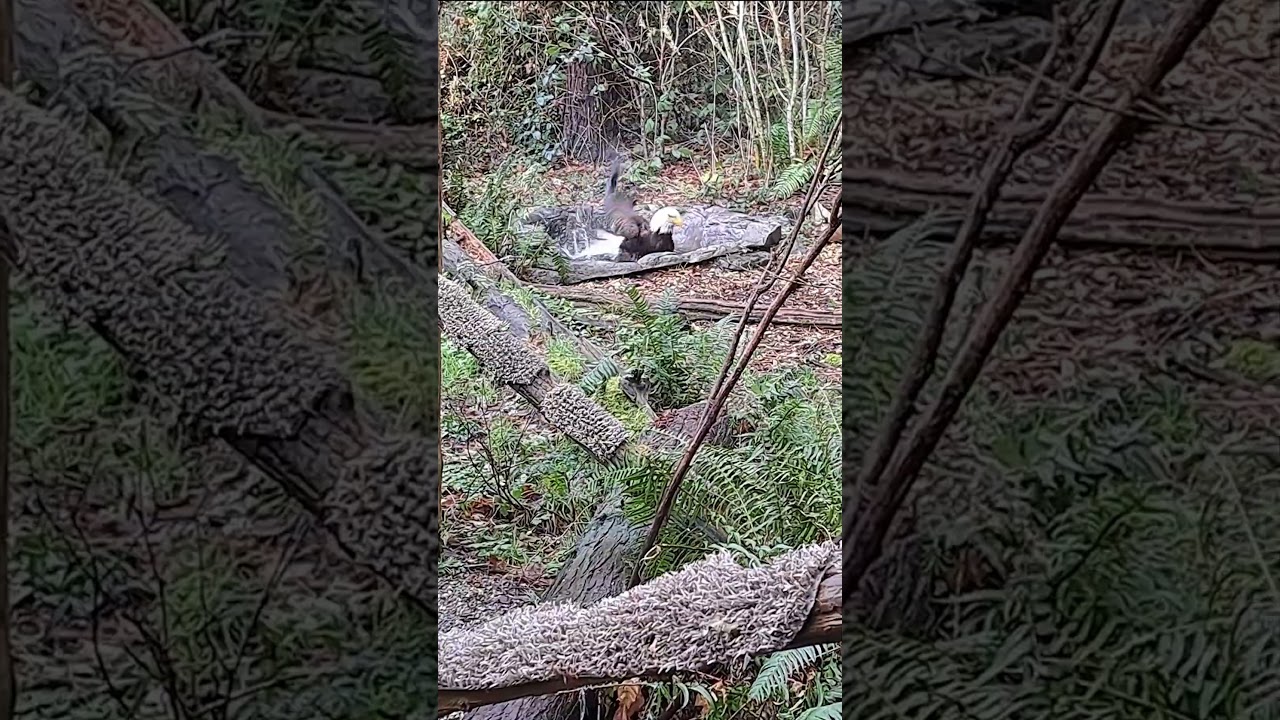- The significance of Cheveyo’s bird bath ritual in terms of bald eagle behavior and well-being.
- Insights into Cheveyo’s rescue story and rehabilitation process within zoo management and wildlife conservation.
- The role of zoos in biodiversity conservation and the ethical considerations surrounding captive wildlife.
- A closer look at bald eagle physiology, habitat preferences, and conservation status.
- The educational impact of videos showcasing animal behaviors in raising public awareness and supporting conservation efforts.
Cheveyo, a rescued bald eagle, recently captivated viewers with a video of him indulging in a bird bath. This simple yet significant behavior carries profound implications for understanding bald eagle natural history and the essential role that such activities play in their well-being. In observing an eagle, like Cheveyo, engage in self-care behaviors, we unlock valuable insights into the intricacies of avian life that are crucial for both the birds themselves and their stewards in wildlife management and conservation.
Bird baths are vital for avian species as they help with feather maintenance and cleanliness. For bald eagles, ensuring feathers are in optimal condition is essential for thermal regulation and efficient flight. Bathing behaviors can indicate good health and a stress-free environment, reflecting the exemplary care Cheveyo receives. The subtleties of Cheveyo’s behavior, such as the manner in which water is applied using his beak and wings, underline the instinctual practices that are significant for all eagles.
Cheveyo’s journey to his current sanctuary began under distressing circumstances, a narrative common among many animals in rehabilitation centers. Rescued as an injured or displaced eagle, Cheveyo underwent rigorous care and support to regain his strength. This reflects the commitment and proficiency required in the field of zoo management and rehabilitation. Each stage of Cheveyo’s recovery involved precise health assessments, dietary regimens, and, where possible, conditioning to help him regain natural behaviors. Such rehabilitation stories highlight the imperative of strategic conservation efforts focused on rehabilitation and reintroduction into the wild, when feasible.
The broader role of zoos is to act as custodians of biodiversity. They play a pivotal role in preventing extinction of species like the bald eagle, which faced significant declines during the mid-20th century. Through breeding programs, educational outreach, and sanctuary facilities for non-releasable wildlife, modern zoos contribute significantly to conservation science. Ethical considerations, however, are always prevalent. Debate continues over the balance between maintaining animal well-being and the educational values such institutions provide. Nevertheless, with stringent regulations and a conservation-first mindset, zoos remain essential in fostering awareness and supporting biological diversity.
The bald eagle, an icon of American lore, encourages both admiration and action in its conservation. With a wingspan reaching up to eight feet, bald eagles possess distinct physiological adaptations such as powerful talons, highly functional vision, and aerodynamic wing shapes, facilitating their status as apex predators. Their habitats are typically close to large bodies of water—with forests to provide nesting sites—mirroring their preference for environments rich in fish and small mammals. The species’ recovery, from the brink of extinction due to pesticide exposure and habitat loss, underscores robust conservation efforts including the banning of harmful pesticides like DDT and the implementation of laws such as the Bald and Golden Eagle Protection Act.
Videos like the one featuring Cheveyo not only entertain but serve as potent educational tools. They raise public consciousness about the importance of preserving wildlife and natural ecosystems. Such media serve both in engaging audiences and in bridging gaps between human communities and wildlife. They potentially drive support for conservation programs through advocacy and funding, reflecting the shared responsibility in safeguarding natural heritage.
The story of Cheveyo, the rescued bald eagle, and his simple yet profound bird bath ritual provides an engaging glimpse into the essential maintenance behaviors of avian species. It underscores the critical role of dedicated rehabilitation efforts, the ongoing debate surrounding the ethics of wildlife captivity, and the overarching purpose of zoos in conservation. Moreover, it exemplifies the power of engaging media in inspiring conservation-minded thinking and actions in an audience increasingly aware of their influence on fragile ecosystems. As such, Cheveyo doesn’t just symbolize individual recovery but also resilience and the unified efforts toward a sustainable relationship with wildlife and nature.
*****
Source Description
Cheveyo, the majestic rescued bald eagle, enjoys a refreshing bird bath. 🦅 Cheveyo was rescued in New York with a gunshot wound to her left wing, which had to be amputated. Her ability to navigate her space is limited, so we made it possible for her to get where she wants to be in her habitat.
📹: Keeper Wendi


